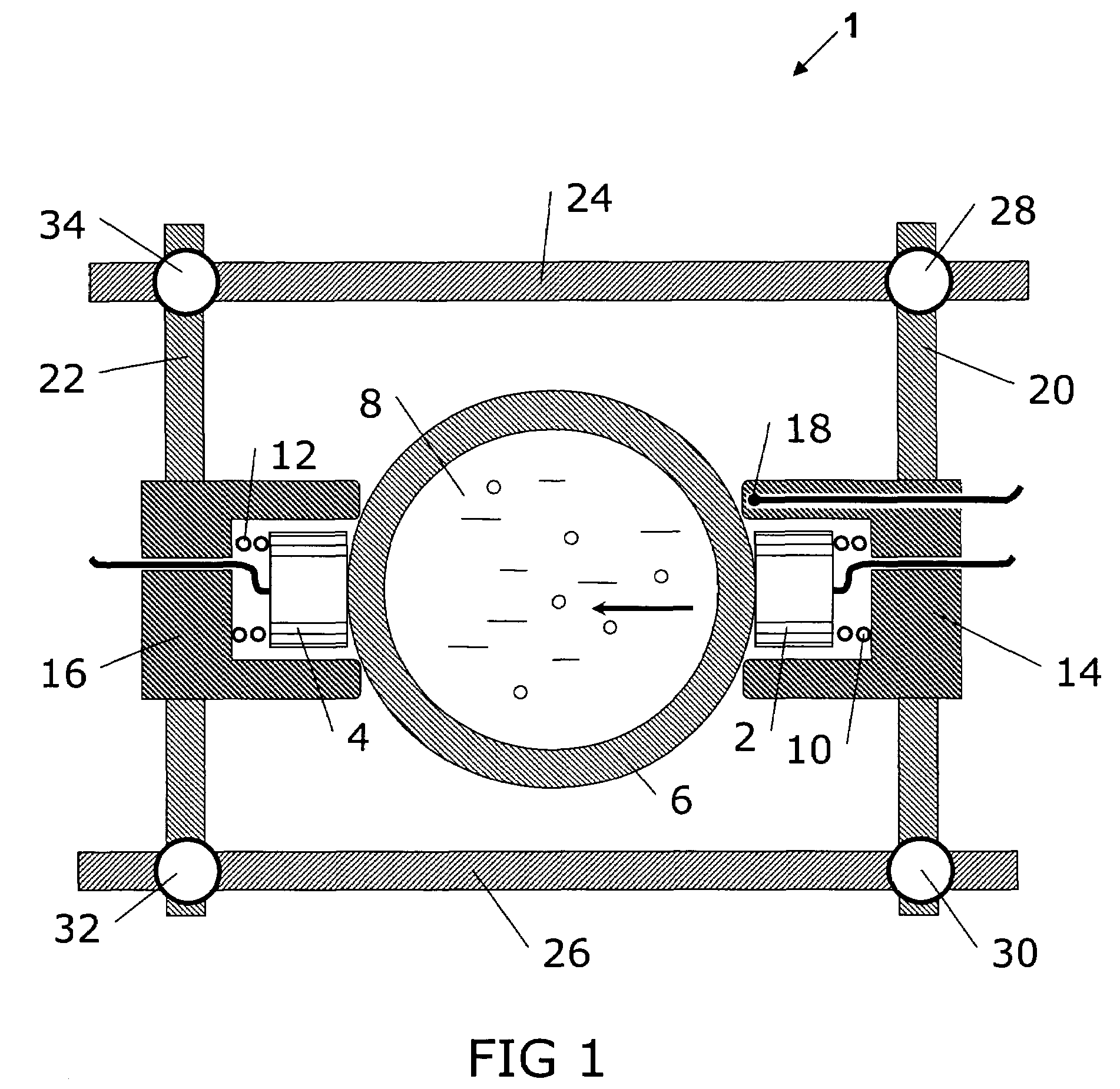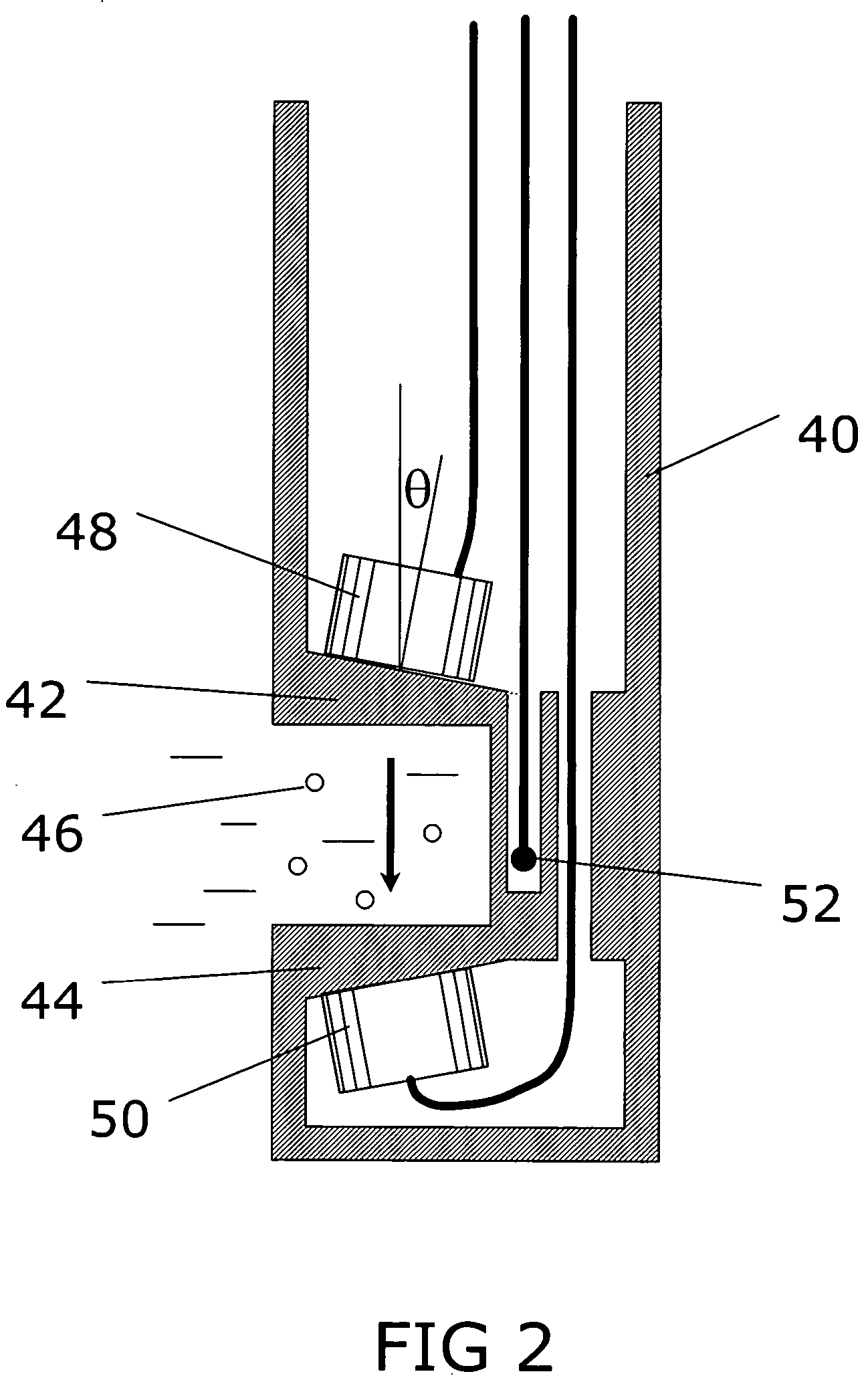Ultrasonic monitor of material composition and particle size
a technology of material composition and ultrasonic monitor, which is applied in the direction of instruments, specific gravity measurement, suspensions, etc., can solve the problems of inability to accurately calculate theoretical attenuation, and inability to meet the requirements of measurement,
- Summary
- Abstract
- Description
- Claims
- Application Information
AI Technical Summary
Problems solved by technology
Method used
Image
Examples
Embodiment Construction
[0027]FIG. 1 shows a plan view of a first embodiment of an ultrasonic monitor 1 featuring two ultrasonic transducer assembles 2 and 4 mounted on the outside of a conduit or container 6 holding material 8. Although material 8 is depicted as being located in a conduit 6 in FIG. 1, the material 8 may be located in any type of pipe, container, or vessel. The material 8 as used throughout this application is defined as a suspension of solid, liquid, or gas particles in a liquid or other solid-suspending material. Typically, a material 8 will be a slurry of solid particles or an emulsion of liquids, however, Applicant's invention is not limited to these two representative suspensions. The two ultrasonic transducer assemblies 2, 4 are clamped to the outside of the conduit 6, such that ultrasonic waves may pass through the conduit 6 walls. The ultrasonic transducers 2, 4 provide for both the generation and transmission of ultrasonic waves and the reception of ultrasonic waves. Although a cy...
PUM
 Login to View More
Login to View More Abstract
Description
Claims
Application Information
 Login to View More
Login to View More - R&D
- Intellectual Property
- Life Sciences
- Materials
- Tech Scout
- Unparalleled Data Quality
- Higher Quality Content
- 60% Fewer Hallucinations
Browse by: Latest US Patents, China's latest patents, Technical Efficacy Thesaurus, Application Domain, Technology Topic, Popular Technical Reports.
© 2025 PatSnap. All rights reserved.Legal|Privacy policy|Modern Slavery Act Transparency Statement|Sitemap|About US| Contact US: help@patsnap.com



